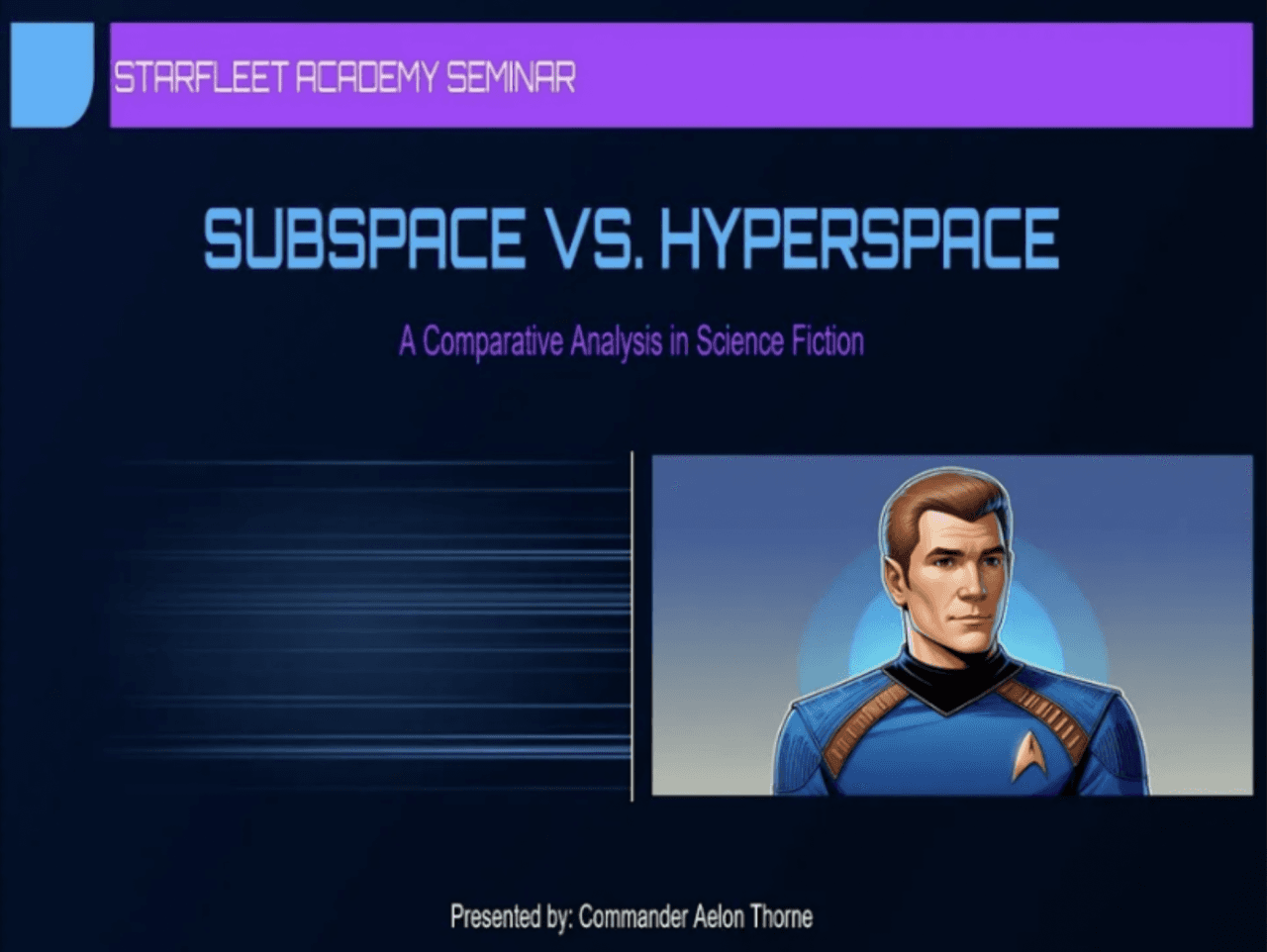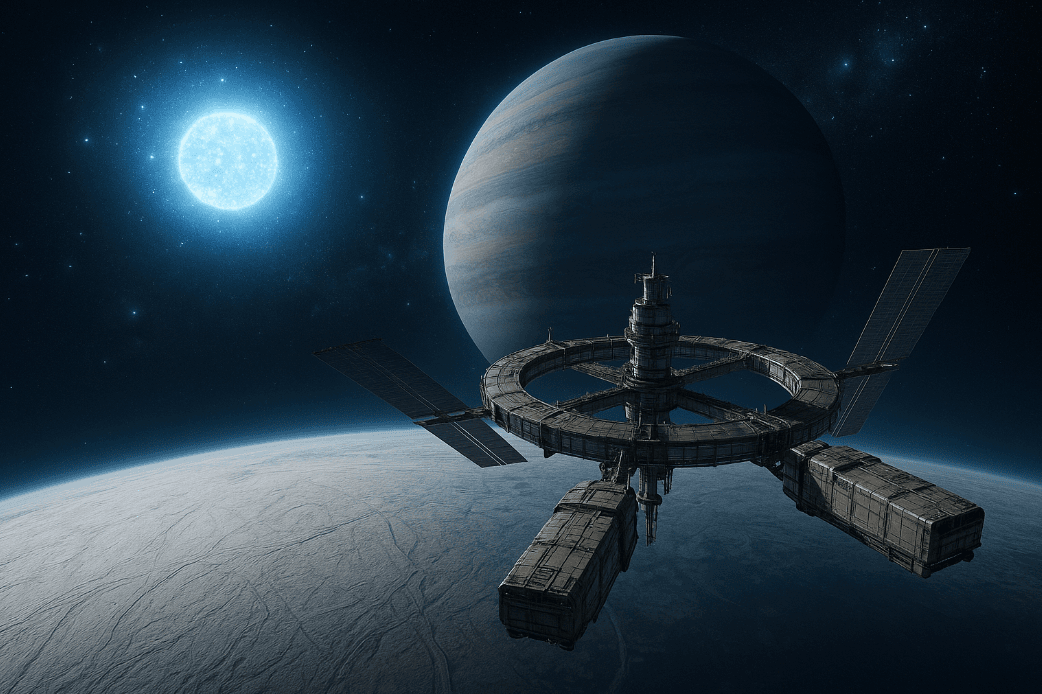AI for Deep Research and High-Concept Worldbuilding

AI for Deep Research and High-Concept Worldbuilding

Bending the rules of physics is acceptable in fiction, as long as writers apply the logic consistently. As audiences, we suspend our disbelief all the time, immersing ourselves in imagined worlds. But we can only go so far before the narrative becomes implausible. While creative license is often employed, staying close to realistic science can be a way to keep your audience grounded and engaged. Nothing kills a story for me faster than something so wildly unrealistic it yanks me right out of the experience. This is where my passion for detail and AI-driven research plays a key role in story development.
The Basics
In science fiction, bending or breaking the laws of physics is commonplace. Take faster-than-light (FTL) travel, for example. Writers often use warp speed to bend spacetime around a ship, allowing it to exceed light speed and cover vast distances in hours. In franchises like Star Trek and Star Wars, subspace and hyperspace respectively, provide ways to bypass the speed limits of normal space, enabling faster-than-light travel and communication across distant star systems. These devices also sidestep the rules of relativity, allowing for time to flow normally within the story without the relativistic time distortions of FTL travel.
I wanted to know how subspace worked in Star Trek, so I asked ChatGPT for a summary. Not only did it provide the details I was looking for, but it also offered to format it as a Starfleet briefing, complete with a script and graphics explaining subspace and hyperspace differences across various franchises. This kind of creative synthesis is invaluable in maintaining internal consistency while exploring speculative science.

Deep Research
For my fanfic Star Trek Section 31 origin story, I previously wrote in a Stage 32 Lounge Post about how AI helped me stay true to canonical details, a crucial element for any writer hoping to engage with super fans. Here, I will go a bit deeper into that process. With so many series, movies, and fan works, tracking down the right details manually would have been a monumental task. Let me briefly explain how AI made this easier.
After outlining my beats and storyboard, shoutout to Blake Snyder’s Save the Cat (more on that in a future blog), I dove into the writing. Like many writers, I encountered those unexpected moments when new ideas and plot elements suddenly emerged, requiring me to revise the plan. At the time, I was experiencing a rare writer’s high, with ideas flooding my mind faster than I could write them down. Rather than powering through, I spent the entire second day researching canonical references and creating a detailed treatment with exhaustive footnotes to the appropriate reference: series, season, episode number and name, relevant links, and a summary for later recall of why this information is relevant. My story is set in the Enterprise series era for maintaining consistency with the first canonical Section 31 references, as the sample footnote explains:

The research process is simple: enter into an AI platform a basic query like, ‘In which series and episode is Section 31 first mentioned?’ Seconds later, up comes the relevant information. This was repeated on multiple queries until I had built up a detailed Excel timeline that placed events from the Enterprise series into their proper chronological sequence, or where I chose to incorporate an intercut into the story:

It was a bit of a marathon session, 24 hours straight of pure creative energy, but by the end, I had a clear summary and was ready to continue writing.
Another example: for my Final Countdown rewrite, I collaborated closely with both a retired naval commander and a fighter pilot to nail down the technical details. I also used AI to pull historical information, as I am highly detail-oriented; can you tell? For example, I wanted to know precisely where the three American carriers were on the morning of December 7 that were based at Pearl, but not there that fateful morning, and where the Japanese fleet was located for launching the attack.
Searching for those details probably would have taken hours of scanning naval history books, but AI told me in seconds exactly where each American carrier task force was. Saratoga in San Diego, and both the Lexington and Enterprise returning from delivering aircraft to Midway and Wake, respectively, and where these ships were that morning. I then plotted those positions in Google Maps, screenshot the territory, and copied it into PowerPoint, where I then added all the relevant task force information and the location of my fictional future carrier to intercept the Imperial Japanese Navy.

One interesting note came up during this research: the IJN also had no idea where the American carriers were, and this led to a critical but fateful decision. Many senior Japanese officers were pressing for a second attack on Pearl, but Admiral Nagumo in command of the Japanese forces, fearing the American carriers could be nearby, opted for caution and ordered the fleet west, or the attack on Pearl could have been much worse.
I also used AI to pinpoint the location of the Japanese airbases, in southern Taiwan (then Formosa), that destroyed
American planes at Clark Air Base in the Philippines, eight hours after the Pearl Harbor attack. Additionally, I incorporated real historical figures and events from the Pacific theater as characters, adding layers of authenticity to the story. For example, Admiral Kimmel (CINCPAC) names Halsey “commander of all the ships at sea.”
High-Concept Worldbuilding
For about a decade, a sci-fi trilogy has been percolating in my mind, but I was stuck on how to begin with scientifically plausible experimental physics. After using AI for the deep research above, I realized it could also help with scientific queries. The results were astonishing.
Without giving too much away (one wishes to protect their intellectual property), here are a few key points from my
deep dive into AI-assisted worldbuilding:
- I provided AI with scientific papers I had found years ago and asked it to find the latest groundbreaking
research in theoretical physics - I asked AI to suggest stars within a specific travel time at a set speed
- Based on these results, I then asked AI to speculate on specific plot elements I wanted to explore

But the real surprise came when AI followed up with prompts like, “Would you like me to help create a plausible physics experiment?” and “Would you like me to plot the route?” Of course, I said yes. The results provided stunning insights, tailored to fit my narrative worldbuilding. With the core research complete, I now have a scientifically plausible starting point for the physics involved and a defined destination. This treasure trove of data allows me to build my story in a narrative playground filled with possibilities.
I could have just made up these details as many other sci-fi creators do, but I wanted something closer to reality. I recall an episode with guest Andy Weir on StarTalk with Neil deGrasse Tyson, where they discussed the painstaking research behind The Martian. Inspired by that, I decided to follow the same path. Now, my trilogy’s physics is not just plausible; they are grounded in real scientific possibilities. And with AI’s help, even the choice of destination opened up a universe of new narrative possibilities I had not considered before.
Incorporating AI into deep research and worldbuilding has transformed the way I approach storytelling. It allows me to blend the real and the speculative in ways that feel grounded and immersive, pushing the boundaries of what is possible while keeping audiences hooked.
Let's hear your thoughts in the comments below!
Got an idea for a post? Or have you collaborated with Stage 32 members to create a project? We'd love to hear about it. Email Ashley at blog@stage32.com and let's get your post published!
Please help support your fellow Stage 32ers by sharing this on social. Check out the social media buttons at the top to share on Instagram @stage32 , Twitter @stage32 , Facebook @stage32 , and LinkedIn @stage-32 .
About the Author

Jason Sylvester
Screenwriter, Line Producer
I’m a multi-genre author and screenwriter whose body of work spans high-concept speculative fiction, deeply researched historical nonfiction, and emotionally resonant character-driven drama. From an alternate-history rewrite of The Final Countdown with military-grade realism, to a Star Trek fan thri...




